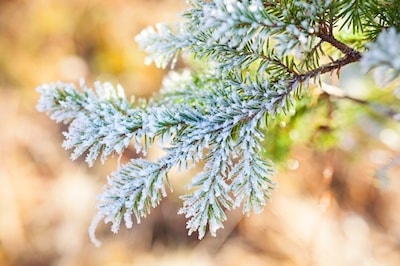How To Prepare Your Trees for Spring
While it still may be cold outside, Spring is coming – and with it, new growth on your trees. Now is the perfect time to prepare them for warming temperatures, (as well as potential late spring freezes) before you have to scramble to get your trees ready for a productive growing season.
Test Your Soil
The first step you should take is to get your soil tested and measure it’s pH level. If the soil isn’t at the level it needs to be, you’ll have to make adjustments, and it’s best to do it now rather than later. Different types of plants grow best in different pH levels, and fruit trees seem to perform at their best in soil that is somewhere between 6.0 and 6.5 pH. The slightly basic soil produces larger, more succulent fruit.
Add Nutrients
Late Winter is also the time to apply conditioners to the soil. Additives such as nitrogen, phosphorus, and potassium need time to be absorbed and spread evenly throughout the soil. Applying them weeks before the growing season is the best bet to allow the roots to properly take in the different nutrients.
Plant
If you intend to expand your orchards, begin preparations now. Despite the cold conditions and the poor appearance of the trees, this is a good time to plant any bare root trees. Because of the cold, the sap isn’t flowing and could freeze in place and kill the tree. Once you get them in the ground, feel free to add some protection against the cold if you think it’s necessary. The added protection could help the trees grow more and isn’t likely to hurt them. However, take care not to add anything that would stimulate the tree, because if it comes out of its dormant state, it may not survive the cold. The best form of freeze protection is to wrap the tree in dry blankets (maybe also a tarp or thin plastic to shield from the rain), taking care not to break any of the branches. If the blankets get wet, remove them and replace them.
Prune
Dead branches are exposed and easy to see this time of year, so take the opportunity to prune them closely, as well as cleaning up any branches that threaten to rub against one another. If you are careful, you won’t cause any damage to the tree. Just be sure not to cut it too closely lest you expose fresh bark to the wind. When in doubt, call your local tree experts (that’s us!) for professional help.
One last bit of advice – if you intend to apply any insecticides, such as dormant oil, be very careful to follow the directions. If you don’t feel the temperature will stay within the proper range for the right period of time, wait to apply it. Hold off until closer to spring when temperatures are warmer. Misuse of this oil can damage the tree and hurt its fruit yield. However, with proper care and technique, as well as ensuring that you take the time now to prepare your trees, you will see a great harvest later this year.
Late Spring Freezes
 Apple
Apple- Flowering Cherry
- Dogwood
- Magnolia
Trees that are less susceptible include hardier varieties such as:
- Linden
- Crab apples
- Siberian elm
- Silver maple
- Lilacs
How to Tell if Your Tree was Damaged by a Late Freeze
While different types of trees react differently to untimely freezing temperatures, some of the most common signs of frost damage to look for in trees include: blackened, dry and/or shriveled leaves, and leaves that drop prematurely during a hot spell. If you notice any of these signs in your trees, then they have probably sustained damage from a surprise dip into the low 30s.
What Can You Do to Help Trees with Frost Damage?
If your tree shows these signs, you are probably wondering what you can do to save it, but unfortunately, there’s nothing you can do. Throughout the year, however, (and while a tree’s ability to survive in a particular climate cannot be changed just by pampering it) there are steps you can take to give it the help it needs to withstand Mother Nature’s surprises. You can maintain a tree’s overall healthy by:
- Pruning dead branches in the appropriate season
- Resisting the urge to over water, especially in heavy clay soil
- Water deeply and less frequently
- Fertilize prior to July 30th, but not too early in the spring.
Although it can be incredibly painful to watch your trees suffer from frostbite, if you take good care of them throughout the year they will be more likely to recover from the damage and come back stronger next year.
Expert Spring Tree Care in Portland, Oregon
If you have questions about your trees, or need professional, experienced tree care for your Portland Metro area home, call Inexpensive Tree Care today.




